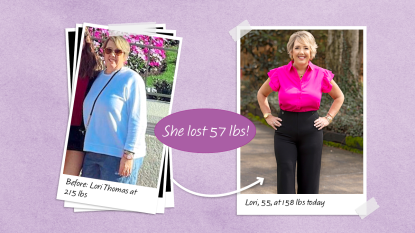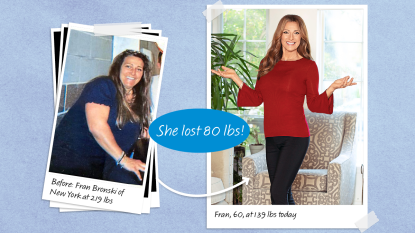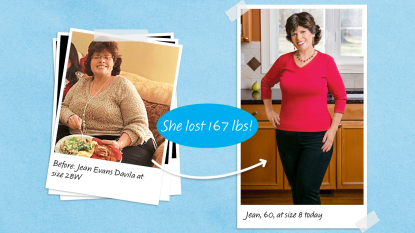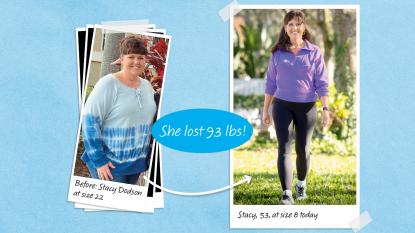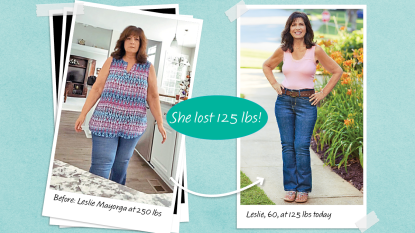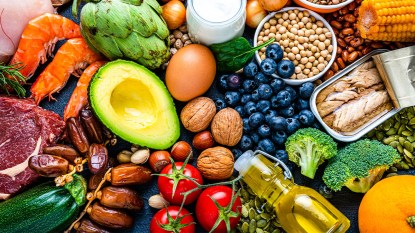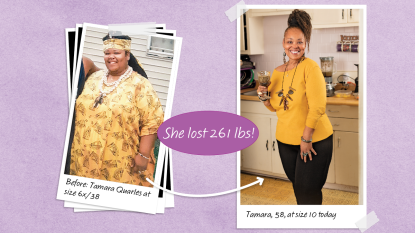This Diet Can Help You Lose Weight By Piling More Food on Your Plate

How many times have you been on a diet only to have any success slip away when you start eating regularly again? Whether you’ve tried cutting back on carbs for the ketogenic diet or scheduling your meals with intermittent fasting, yo-yo-ing right back to your starting point is always a common complaint. This inspired researchers to look for a better way to help people reach and maintain healthy weight goals.
Unlike traditional diets that focus on restrictions, Shirin Panahi, PhD, a nutritional researcher from Laval University in Québec, Canada, decided to see what would happen if she flipped things around. She and her team encouraged their study participants to eat large portions of healthy-yet-filling food for each meal. They called this the “satiating diet,” which (as you might guess) relies on making sure you actually feel full while still losing weight.
The researchers compared participants on their diet to others following a more restricting approach. Those on the satiating diet were instructed to have at least four servings in their meals consisting of fruits, vegetables, fiber-rich whole grains, lean protein. Here are some examples of one serving for each category of satiating food:
- Fruit: 1 apple, 1 orange, 1 medium banana, and 1/2 cup of fresh, frozen, or canned fruit
- Vegetables: 1 cup of salad, 1 cup of vegetable soup, 1 medium carrot, and 1/2 cup of fresh, frozen, or canned vegetables
- Grains: 1 slice of whole grain bread, 1/2 whole grain bagel or pita, 1/2 cup brown rice (cooked), 1/2 cup whole wheat pasta, 30 grams of read-to-eat cereals (with fiber), 1/3 cup of oatmeal (cooked), and 4-6 whole grain crackers
- Protein: 30 grams of meat, poultry, or fish, 1 big egg, 250 milliliters of low-fat milk, 175 milliliters of low-fat yogurt, 30 grams of cheese, 4 tablespoons of nuts or seeds, 125 milliliters of tofu and legumes
“What’s so special about these foods is that each of them possesses specific characteristics that benefit our health either by decreasing hunger, reducing body fat, lowering blood sugar, improving blood pressure, or increasing metabolism,” Dr. Panahi explained in a blog post for Scientific American earlier this year.
Participants were able to mix and match the portions as they wanted, plus enjoy an extra snack on a daily basis. The researchers also recommended eating moderate amounts of healthy fats like avocado and adding hot peppers to their meals for the metabolism-boosting effect of capsaicin.
After observing both diets for 16 weeks, they found that those eating satiating foods were not only able to lose significant amounts of body fat, but were less likely to give up on their diet — only 8.6 percent dropped out versus the 44 percent who dropped out of the restrictive diet. They also note that participants were told to maintain “low physical activity” levels, so it wasn’t like they were hitting the gym more often.
Sounds like magic, right? We thought so too, but think about it: The biggest reason any of us decide to break our diet is because we get so hungry and frustrated that we just dive into the first delicious, but probably unhealthy, pile of food we can find. It makes sense that if we’re already getting full on yummy food that happens to be healthy, we can curb that impulse.
Panahi acknowledged that more studies will need to be done to learn more about how eating large, well-rounded meals can help us lose weight. In the meantime, we can all try to keep our plates and bellies full of balanced, healthy portions and hopefully have similar results!
More From Woman’s World
How Randy Jackson Has Maintained His Weight Loss After Gastric Bypass Surgery
This French Soup Will Help You Lose Weight Fast — And It Tastes Delicious


